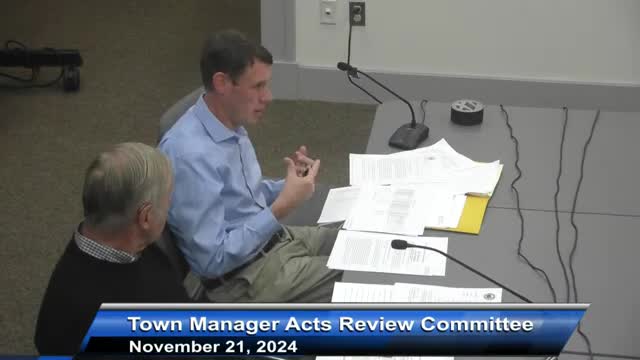Town Council Debates Controversial Recall Process Changes
November 21, 2024 | Town of Danvers, Essex County, Massachusetts
This article was created by AI summarizing key points discussed. AI makes mistakes, so for full details and context, please refer to the video of the full meeting. Please report any errors so we can fix them. Report an error »

In a recent government meeting, officials engaged in a robust discussion regarding the parameters for removing elected officials from office. The conversation centered on the criteria that would justify such actions, with particular emphasis on whether past misconduct should be considered.
One key point raised was the concern about placing the burden of determining the grounds for removal on the town clerk. Officials expressed that the clerk's role should be limited to verifying the number of valid signatures on a petition, rather than making subjective judgments about the severity of alleged misconduct. This perspective aims to prevent the clerk from being put in a politically charged position.
Participants debated the implications of allowing citizens to initiate removal petitions based solely on actions taken while in office versus considering past behavior. Some argued that allowing for the consideration of past actions could lead to frivolous petitions, while others contended that significant past misconduct should not be overlooked if it impacts the community.
The discussion also highlighted the importance of ensuring that the process remains fair and transparent. Officials acknowledged the need for \"guardrails\" to prevent misuse of the removal process, suggesting that a threshold of public support—such as a required percentage of signatures—could serve as a safeguard against frivolous claims.
Ultimately, the meeting underscored the delicate balance between accountability and the potential for political maneuvering. As officials continue to refine the language surrounding this issue, they aim to establish a clear and fair process that empowers citizens while protecting elected officials from unwarranted challenges.
One key point raised was the concern about placing the burden of determining the grounds for removal on the town clerk. Officials expressed that the clerk's role should be limited to verifying the number of valid signatures on a petition, rather than making subjective judgments about the severity of alleged misconduct. This perspective aims to prevent the clerk from being put in a politically charged position.
Participants debated the implications of allowing citizens to initiate removal petitions based solely on actions taken while in office versus considering past behavior. Some argued that allowing for the consideration of past actions could lead to frivolous petitions, while others contended that significant past misconduct should not be overlooked if it impacts the community.
The discussion also highlighted the importance of ensuring that the process remains fair and transparent. Officials acknowledged the need for \"guardrails\" to prevent misuse of the removal process, suggesting that a threshold of public support—such as a required percentage of signatures—could serve as a safeguard against frivolous claims.
Ultimately, the meeting underscored the delicate balance between accountability and the potential for political maneuvering. As officials continue to refine the language surrounding this issue, they aim to establish a clear and fair process that empowers citizens while protecting elected officials from unwarranted challenges.
View full meeting
This article is based on a recent meeting—watch the full video and explore the complete transcript for deeper insights into the discussion.
View full meeting
